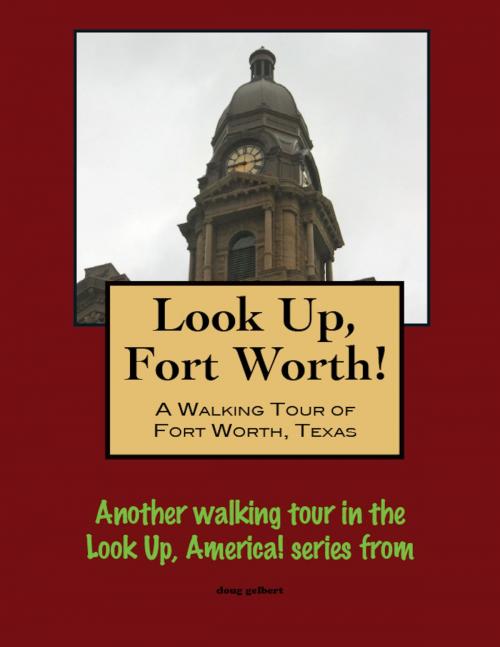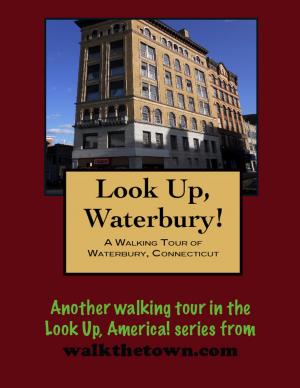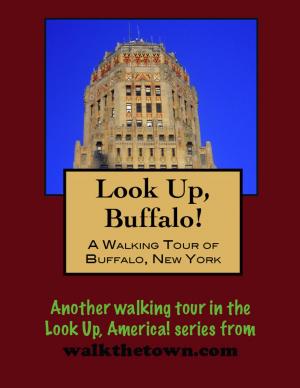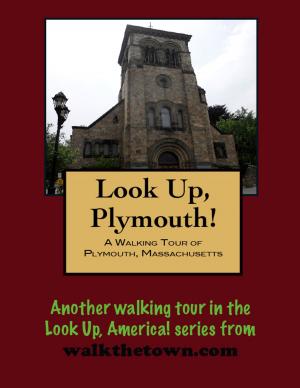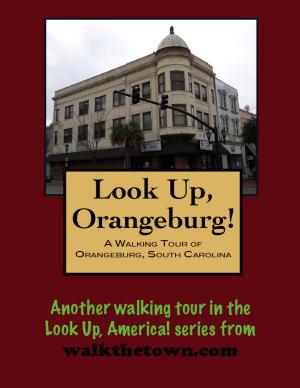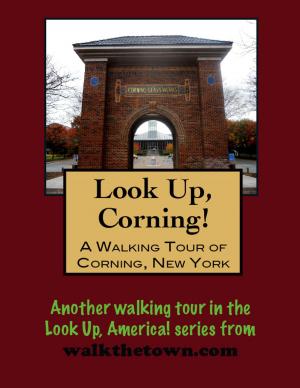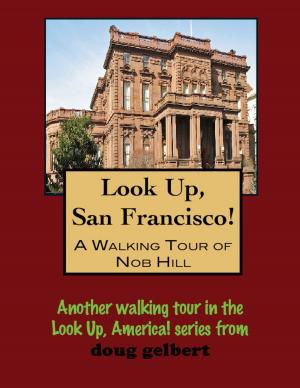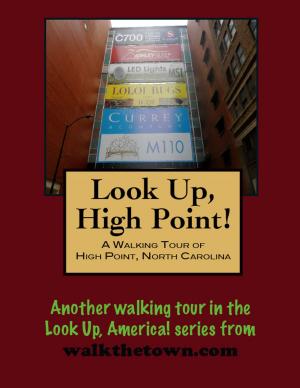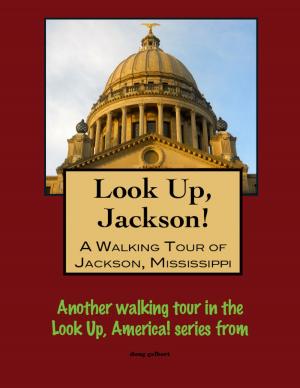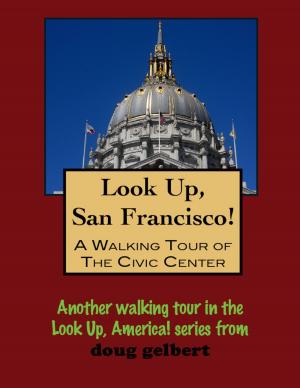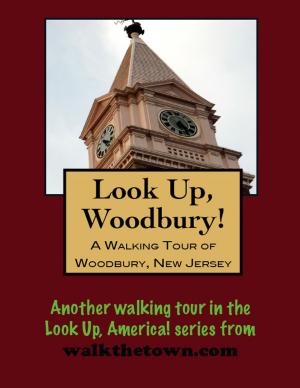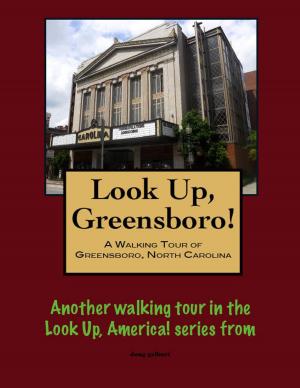| Author: | Doug Gelbert | ISBN: | 9781301742905 |
| Publisher: | Doug Gelbert | Publication: | June 8, 2013 |
| Imprint: | Smashwords Edition | Language: | English |
| Author: | Doug Gelbert |
| ISBN: | 9781301742905 |
| Publisher: | Doug Gelbert |
| Publication: | June 8, 2013 |
| Imprint: | Smashwords Edition |
| Language: | English |
There is no better way to see America than on foot. And there is no better way to appreciate what you are looking at than with a walking tour. Whether you are preparing for a road trip or just out to look at your own town in a new way, a downloadable walking tour from walkthetown.com is ready to explore when you are.
Each walking tour describes historical and architectural landmarks and provides pictures to help out when those pesky street addresses are missing. Every tour also includes a quick primer on identifying architectural styles seen on American streets.
There was a never a fort in Fort Worth and the town’s namesake never had anything to do with the place either. William Jenkins Worth was a veteran of the War of 1812, the Seminole Wars and the Mexican War who was placed in command of the Department of Texas in 1849. Worth died of cholera shortly after arriving in San Antonio and less than a month later the camp established at the confluence of the West Fork and Clear Fork of the Trinity River, near present day Houston and Belknap streets, was named in his honor. The outpost was intended to check Indian activity in North Texas and was officially designated Fort Worth on November 14, 1849. When that activity shifted westward the U.S. Army followed and the camp was abandoned by 1853. Settlers moved into the remnants of the post and set about building a town.
The Civil War and economic hard times stifled the early growth of the settlement although pioneer residents managed to wrangle possession of the county government in its early days. So many people moved away in the early 1870s that an article appeared in the Dallas newspaper describing Fort Worth as so moribund that a panther was observed to be asleep in front of the courthouse. Rather than take offense the townsfolk adopted the panther as its mascot.
But it was not a panther but another animal that came to define Fort Worth - the cow. The railroad pulled into town in 1876 and Fort Worth became the Southwest’s westernmost railhead for shipping cattle. Cowboys flooded into the booming town and “Cowtown” became renowned for its lawlessness, especially in the part of town packed with saloons and dance halls known as Hell’s Half-Acre, although chroniclers of the crime-plagued town estimated the area as more like two and one-half acres.
Fort Worth was mostly settled down by 1893 when Louville Niles established the Fort Worth Stockyards Company and the country’s two biggest meatpackers, Swift and Armour, set up shop in town. The stockyards spread across more than 250 acres of Fort Worth, larger than anything south of St. Louis. Population soared from about 25,000 in 1890 to over 160,000 by 1930.
It was during this growth period that the face of Fort Worth began taking shape. Almost every important building in town in the early 1900s was designed by the architectural shop of Marcus Sanguinet, Carl Staats and Wyatt Hedrick, who joined the firm in the later years of this period. Fort Worth has done an admirable job of retaining these heritage structures which stand a century later as a portfolio of the architects.
Our exploration of the Fort Worth streetscape will track down these skyscrapers but first we will begin where modern architectural masters have left their imprint on the city...
There is no better way to see America than on foot. And there is no better way to appreciate what you are looking at than with a walking tour. Whether you are preparing for a road trip or just out to look at your own town in a new way, a downloadable walking tour from walkthetown.com is ready to explore when you are.
Each walking tour describes historical and architectural landmarks and provides pictures to help out when those pesky street addresses are missing. Every tour also includes a quick primer on identifying architectural styles seen on American streets.
There was a never a fort in Fort Worth and the town’s namesake never had anything to do with the place either. William Jenkins Worth was a veteran of the War of 1812, the Seminole Wars and the Mexican War who was placed in command of the Department of Texas in 1849. Worth died of cholera shortly after arriving in San Antonio and less than a month later the camp established at the confluence of the West Fork and Clear Fork of the Trinity River, near present day Houston and Belknap streets, was named in his honor. The outpost was intended to check Indian activity in North Texas and was officially designated Fort Worth on November 14, 1849. When that activity shifted westward the U.S. Army followed and the camp was abandoned by 1853. Settlers moved into the remnants of the post and set about building a town.
The Civil War and economic hard times stifled the early growth of the settlement although pioneer residents managed to wrangle possession of the county government in its early days. So many people moved away in the early 1870s that an article appeared in the Dallas newspaper describing Fort Worth as so moribund that a panther was observed to be asleep in front of the courthouse. Rather than take offense the townsfolk adopted the panther as its mascot.
But it was not a panther but another animal that came to define Fort Worth - the cow. The railroad pulled into town in 1876 and Fort Worth became the Southwest’s westernmost railhead for shipping cattle. Cowboys flooded into the booming town and “Cowtown” became renowned for its lawlessness, especially in the part of town packed with saloons and dance halls known as Hell’s Half-Acre, although chroniclers of the crime-plagued town estimated the area as more like two and one-half acres.
Fort Worth was mostly settled down by 1893 when Louville Niles established the Fort Worth Stockyards Company and the country’s two biggest meatpackers, Swift and Armour, set up shop in town. The stockyards spread across more than 250 acres of Fort Worth, larger than anything south of St. Louis. Population soared from about 25,000 in 1890 to over 160,000 by 1930.
It was during this growth period that the face of Fort Worth began taking shape. Almost every important building in town in the early 1900s was designed by the architectural shop of Marcus Sanguinet, Carl Staats and Wyatt Hedrick, who joined the firm in the later years of this period. Fort Worth has done an admirable job of retaining these heritage structures which stand a century later as a portfolio of the architects.
Our exploration of the Fort Worth streetscape will track down these skyscrapers but first we will begin where modern architectural masters have left their imprint on the city...
